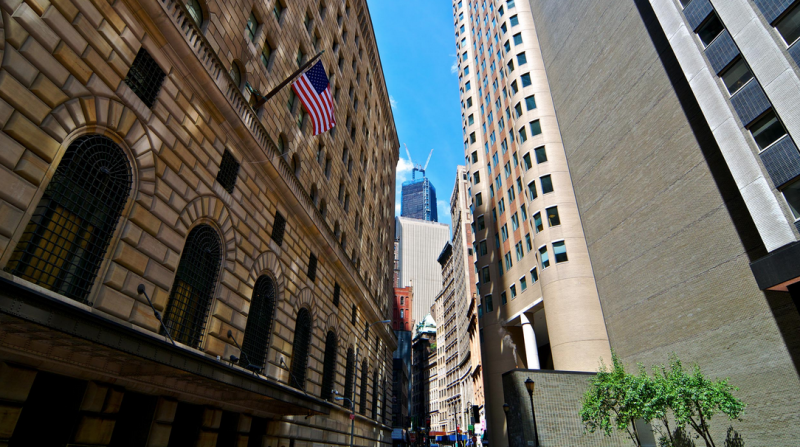by Kristina Hooper, Chief Global Market Strategist, Invesco
Key takeaways
Rising yieldsLast week, the 10-year US Treasury yield rose to levels not seen since 2008, and that had significant implications for stocks. |
Consumer sentimentI was encouraged by what we heard on earnings calls for major retailers last week, as they confirmed my positive views on consumer behaviour. |
Federal ReserveI expect Fed policymakers to err on the side of hawkishness at their symposium in Jackson Hole later this week. |
Why did US Treasury yields rise?
On a very simple level, this could merely be viewed as a case of supply outstripping demand. In fact, in a blog earlier this month, I wrote that we could see Treasury yields rise because of several different factors including: 1) The alterations to the Bank of Japan’s yield curve control policy make US Treasuries less attractive to Japanese investors because of a reduced yield differential; 2) the US is planning to issue a significant increase in Treasuries now that the debt ceiling crisis has been resolved; and 3) the recent Fitch Ratings downgrade of US credit.
However, economic theory posits that bond yields for advanced economies can be decomposed into two components: Real yield and breakeven inflation. Breakeven inflation is simply a market-based measure of inflation expectations, while the real yield is viewed as a reflection of growth expectations. So if breakeven inflation remains static or even declines, then a rise in the Treasury yield can be assumed to reflect growth expectations.
We are seeing this happen now. It seems that the recent rise in Treasury yields reflects improved growth expectations, as fears about recession have subsided — and as inflation data continues to show improvement and survey-based inflation expectations have fallen.
A “bear steepener” complicates the bigger picture
We need to take a step back and look at the bigger picture, which is that long rates have been rising faster than short rates. This phenomenon is called “bear steepening” and it doesn’t typically bode well for the economy.
Now it is important to note that the “bear” in bear steepening refers to bonds rather than stocks, as investors tend to avoid the long end of the curve more than the short end, sending long yields higher. An extended period of bear steepening is relatively rare and is usually associated with concerns about rising inflation. Conventional wisdom suggests that central banks will have to become more hawkish because of rising inflation. This makes long-term bonds less attractive, causing demand for them to drop and yields to rise.
Periods of bear steepening of the yield curve are relatively rare but have tended to precede recessions. However, that is not always true. One example of a bear steepener that didn’t result in recession and was accompanied by a bullish stock market occurred from July 2020 to March 2021. Two-year Treasury yields barely increased but they did rise, while 10-year Treasury yields increased significantly.2
Also, as pointed out above, we have to try to understand what is causing the rise in yield on the long end of the curve. This time around, it’s likely being driven by improved growth expectations — which suggests this bear steepener may not be signaling trouble ahead. In fact, it could suggest expectations that the Fed actually has been successfully able to control inflation without ruining the economy, which could mean expectations of no rate cuts any time soon.
What does this all mean?
There is legitimate concern that the Fed is too worried about inflation and will continue to tighten. The minutes from the July Federal Open Market Committee (FOMC) meeting were perceived as more hawkish. Gas prices are rising in the US, which can cause consumer inflation expectations to increase, and we know the Fed pays attention to such measures. And we saw a recent inflationary resurgence in Canada (and often Canadian inflation data can be predictive of where the US is headed). However, I continue to believe we’re in a strong disinflationary trend, with some hiccups likely along the way.
Suffice it to say that we are getting some confusing market signals. However, no market signal is infallible, and we need to look more holistically at the economic environment. I’m seeing more positive than negative developments. As I noted last week, US inflation data has been improving, and so have survey-based inflation expectations, which matter to monetary policymakers.
Earnings calls highlight positive consumer sentiment
I was also encouraged by what we heard on earnings calls for major retailers last week, as they confirmed my views on consumer behaviour.
- Target CEO Brian Cornell noted that consumers have money to spend, but they continue to focus spending on services rather than goods: “Guests are out at concerts, they are going to movies … they are enjoying those experiential moments and are shopping very carefully for discretionary goods.”3
- Home Depot CEO Ted Decker said that consumer sentiment is rather positive: “Fears of a recession, or at least a severe recession, have largely subsided, and the consumer is generally healthy…”4 And that is supported by recent University of Michigan consumer surveys. The preliminary August estimate of consumer sentiment was 71.2, down slightly from the July reading of 71.6 but still relatively high (the July reading was the highest since October 2021).5
The lagged impact of policy tightening casts a shadow
But corporate executives also recognize there is significant uncertainty about the future given the aggressive monetary policy tightening that has occurred. Home Depot’s Decker explained: “But given all those positives … uncertainties remain … And we don’t know how the monetary policy actions, which are specifically intended to dampen consumer demand, what that impact will ultimately have on consumer sentiment in the overall economy.”4
And that’s all the more reason for the Federal Reserve to sit on its hands and wait to see the lagged effects of its policy tightening. There is certainly apprehension about what might be said at the Fed’s symposium in Jackson Hole this week (in speeches and interviews), but we have to recognize that Fed policymakers are likely to err on the side of hawkishness in their communications because of their need to prevent financial conditions from easing and be able to avoid any more rate hikes.
Hopefully they will take a more cautious position when it comes to policy actions. As we wait and see, and get lots of Fed-speak, I would anticipate some market jitters.
With contributions from Paul Jackson
Footnotes
1 Source: Bloomberg, L.P. as of Aug. 18, 2023
2 Source: Bloomberg, L.P. as of March 31, 2021
3 Source: Target earnings call, Aug. 16, 2023
4 Source: Home Depot earnings call, Aug. 15, 2023
5 Source: University of Michigan Survey of Consumers, Aug. 11, 2023
Copyright © Invesco















